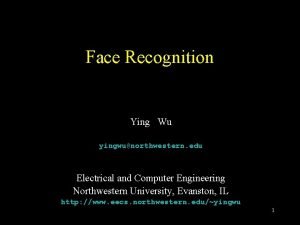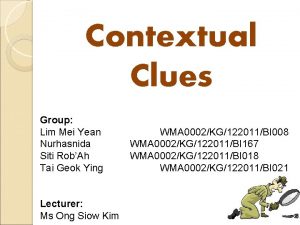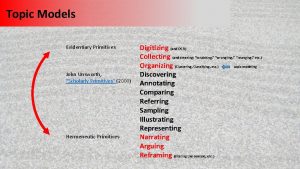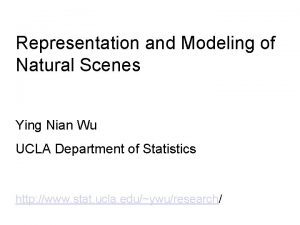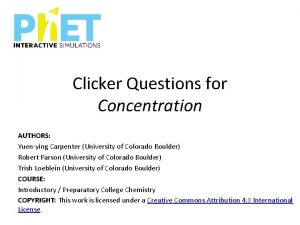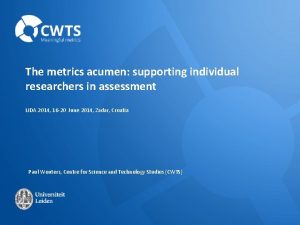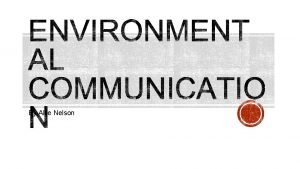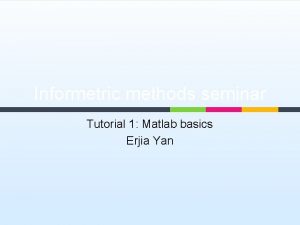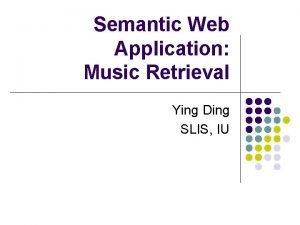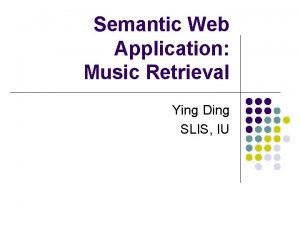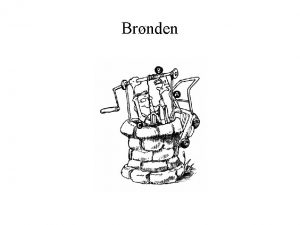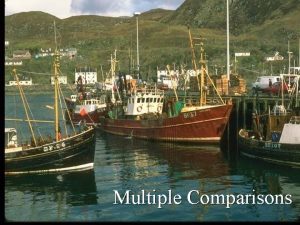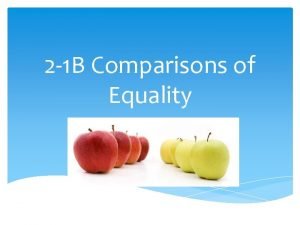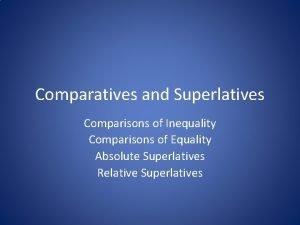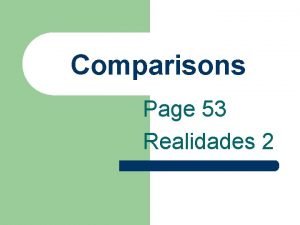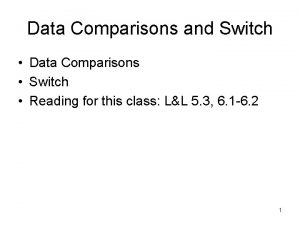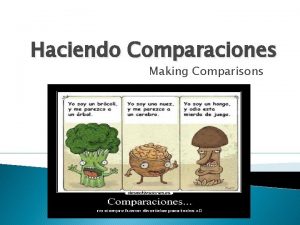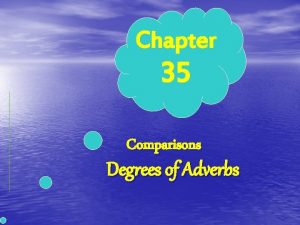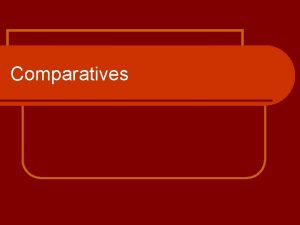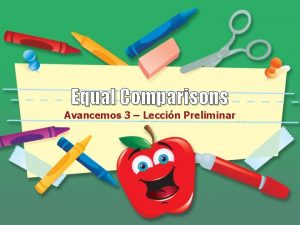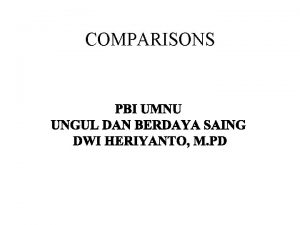Scholarly network comparisons Erjia Yan Ying Ding Cassidy

























- Slides: 25

Scholarly network comparisons Erjia Yan, Ying Ding, Cassidy Sugimoto

Backgrounds I

Motivation I • A higher level of research aggregate – the institution - is rarely studied • An institution is a stable and representative unit to study the production, diffusion, and consumption of knowledge • An institution is a distinct research entity which provides an opportunity for the combination of mappings from social, geographical, and cognitive perspectives.

Backgrounds II

Motivation II • With the advancement of social network analysis, several types of scholarly networks are introduced to bibliometrics, such as citation networks, bibliographic coupling networks, cocitation networks, and coauthorship networks • These networks have their own uses but currently we are unaware of the similarity among them

Dataset • 59 journals indexed as the Information Science & Library Science category. • All document types published within these journals from January 1965 to February 2010 were downloaded for analysis. • Data were processed in two steps – To filter the dataset in order to create a local citation network between institutions – To identify unique institution names from the affiliation data

Network size Size of institution citation networks Size of paper citation networks 1991 -2000 2, 906*2, 906 9, 750*9, 750 2001 -2005 3, 010*3, 010 9, 280*9, 280 2006 -2010 3, 783*3, 783 10, 998*10, 998 Time

The construction of citation and coauthorship networks

The construction of cocitation and bibliographic coupling networks

The construction of topical networks • Author-Conference-Topic (ACT) Model (Tang et al. , 2008) • Ten topics: • The topic similarity between two institutions can be calculated through cosine similarity • Sij is then the line value between institution i and institution j in the topical network

Clustering and mapping methods • VOSviewer clustering and mapping (Waltman, Eck, & Noyons, 2010) technique is selected • It is developed based on Clauset, Newman, and Moore’s (2004) algorithm for weighted networks.


Distance measurements • Cosine distance (CD)

Distance measurements • Earth mover’s distance (EMD)

Basic network characteristics 19912000 20012005 20062010 BGcoupling Citation Cocitation Topic Coauthor BGcoupling Citation Cocitation Topic No. of links Sum of link weights Density No. of clusters 84, 676 31, 280 70, 618 460, 809 5, 260 100, 498 40, 073 89, 596 647, 980 7, 127 248, 934 64, 750 134, 951 686, 196 277, 199 49, 652 210, 583 460, 809 6, 232 399, 688 65, 102 259, 871 647, 980 8, 969 873, 446 103, 556 474, 673 686, 196 0. 0201 0. 0074 0. 0167 0. 1092 0. 0012 0. 0222 0. 0088 0. 0198 0. 1431 0. 0016 0. 0348 0. 0091 0. 0189 0. 0959 51 108 48 10 98 44 44 42 10 102 54 58 44 10 Size of the largest cluster 285 116 181 440 49 262 136 216 482 44 518 218 361 669

Clustering results of top institutions Idx 1 2 3 4 5 6 7 8 9 10 11 12 13 14 15 16 17 18 19 20 Institution name GEORGIA STATE UNIV, ATLANTA HUNGARIAN ACAD SCI, HUNGARY UNIV GEORGIA, ATHENS UNIV MINNESOTA, MINNEAPOLIS UNIV WESTERN ONTARIO, CANADA INDIANA UNIV, BLOOMINGTON FLORIDA STATE UNIV, TALLAHASSEE UNIV BRITISH COLUMBIA, CANADA UNIV OKLAHOMA, NORMAN UNIV SHEFFIELD, ENGLAND UNIV MARYLAND, COLLEGE PK UNIV MICHIGAN, ANN ARBOR DREXEL UNIV, PHILADELPHIA KATHOLIEKE UNIV LEUVEN, BELGIUM UNIV S FLORIDA, TAMPA ROYAL SCH LIB & INF SCI, DENMARK LEIDEN UNIV, NETHERLANDS UNIV ARIZONA, TUCSON UNIV PITTSBURGH, PITTSBURGH UNIV ILLINOIS, URBANA BGcoupling Citation Cocitation 4 29 4 1 1 2 9 42 4 4 48 4 15 6 1 7 15 33 7 30 28 5 16 4 20 11 30 2 13 26 7 3 28 9 28 27 14 42 13 1 1 2 7 43 9 1 9 9 1 1 2 18 32 1 12 5 3 2 6 1 Topic 6 1 6 6 9 9 9 6 2 3 6 2 9 1 9 3 1 6 6 2 Coauthor 20 60 88 79 85 94 47 104 13 11 75 37 35 60 57 78 14 97 79 70

bibliographic coupling network

citation network

cocitation network

coauthorship network

topical network

CD and EMD for each pair of networks 1991 -2000 2001 -2005 2006 -2010 CD EMD BGcoupling-citation 0. 74 0. 34 0. 72 0. 39 0. 77 0. 37 BGcoupling-cocitation 0. 48 0. 44 0. 49 0. 55 0. 54 BGcoupling-topic 0. 90 0. 30 0. 89 0. 33 0. 90 0. 32 BGcoupling-coauthor 0. 68 0. 30 0. 59 0. 21 0. 59 0. 19 Citation-cocitation 0. 78 0. 33 0. 75 0. 33 0. 79 0. 39 Citation-topic 0. 96 0. 33 0. 96 0. 35 Citation-coauthor 0. 89 0. 53 0. 86 0. 49 0. 90 0. 46 Cocitation-topic 0. 90 0. 33 0. 89 0. 35 Cocitation-coauthor 0. 77 0. 44 0. 77 0. 47 0. 83 0. 51 Topic-coauthor 0. 96 0. 37 0. 96 0. 35

Ranking of network similarities CD EMD BGcoupling Citation Cocitation Topic Coauthor BGcoupling 1 1 2 1 BGcoupling Citation Cocitation Topic Coauthor BGcoupling 2 4 1 1 Citation 3 2 3 3 Citation 3 2 2 3 Cocitation 1 2 Topic 4 4 Coauthor 2 3 3 4 - Cocitation 4 3 3 4 Topic 2 1 1 2 Coauthor 1 4 3 4 -

Hybrid networks • In order to capture both social and cognitive aspects of interactions of certain research aggregates, two types of networks, one from the social side and the other from the cognitive side, can be combined and thus forming a hybrid network. • By considering the network density, we suggest the following combinations: – Coauthorship network and citation network; – Bibliographic coupling network and cocitation network; and – Bibliographic coupling network and topical network.

 Are you sleeping father john
Are you sleeping father john Ring christmas bells ding dong
Ring christmas bells ding dong Hidespon
Hidespon Always to remember maya ying lin
Always to remember maya ying lin Scholarly articles
Scholarly articles Scholarly tutoring
Scholarly tutoring Madeleine leininger scholarly articles
Madeleine leininger scholarly articles Project management scholarly articles
Project management scholarly articles Lai ba ying ye zhong
Lai ba ying ye zhong Ying wu northwestern
Ying wu northwestern Dr ying wu
Dr ying wu Csun scholarly articles
Csun scholarly articles Contexual clues
Contexual clues Habits of a scholar kaplan
Habits of a scholar kaplan Scholarly primitives
Scholarly primitives Scholarly
Scholarly Ying nian wu
Ying nian wu Yuen ying carpenter
Yuen ying carpenter Scholarly publishing and academic resources coalition
Scholarly publishing and academic resources coalition Google scholar
Google scholar Scholarly acumen
Scholarly acumen Cassidy watson
Cassidy watson Bobbios
Bobbios Allie cassidy
Allie cassidy Kerri cassidy
Kerri cassidy Yates city greenhouse
Yates city greenhouse









